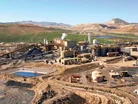US mining outlook: consolidation set to continue in 2020

Significant M&A activity in the metals mining industry is likely to continue. Throughout 2020, the market consolidation that began in 2017 will progress further both globally and within the United States.
Miners are increasingly seeking to capture value through M&A activity, formation of strategic joint ventures and divestiture of non-core assets.
As market consolidation continues, it remains to be seen whether the Federal Trade Commission (FTC) will increase its scrutiny of these transactions. Relatively few of the major M&A transactions that have occurred in recent years have resulted in significant scrutiny by the FTC under Hart-Scott-Rodino. As consolidation continues, it is possible that the FTC will start to take more notice of these transactions.
One of the impacts of market consolidation has been a significant decrease in the number of mid-cap miners. The mining industry is becoming increasingly split between majors and junior exploration companies. A number of factors have contributed to the decline in the number of mid-cap miners, from the M&A frenzy described above to increasingly competitive capital markets.
While mid-cap miners would often develop their own projects, the decrease in the number of mid-caps has meant that much of the significant new mine development is being done by a relatively small group of majors.
An effect of the decrease in the number of mid-cap miners has been the decrease in the use of traditional debt to fund project development. While mid-cap miners have historically been the most likely producers to fund project development through debt, majors and super-majors tend to fund mine development with cash.
Likewise, junior exploration companies, always heavily reliant on the capital markets, are increasingly turning to private investments, and both juniors and majors are becoming more reliant on alternative financings arrangements such as royalties and streaming transactions to fund both working capital and project development. As the mid-caps continue to disappear, the use of traditional debt financing in the mining industry is likely to continue to decrease.
SEE ALSO:
Bright 2020 outlook for Chinese copper demand
Zinc set for global gains from 2020
Top Mining CEOs look ahead to 2020
Read the latest issue of Mining Global here
Foreign Investment in US Mining Assets
Over the last several years, there has been an increase in the number of foreign mining companies acquiring assets in the United States. While a number of non-US based companies have long controlled many of the largest mines in the United States, the past several years has seen the entry of a number of new non-domestic majors.
Some of the primary factors for this increase include: (1) decreasing stability and growing security concerns in certain jurisdictions with traditionally strong mining sectors, including Chile, Brazil and Mexico; (2) the potential of regulatory reform by the Trump Administration aimed at speeding up the permitting process and loosening certain regulatory programs; (3) the availability of a skilled workforce; and (4) the number of world class assets being brought online in the US over the last several years.
While the trade war with China and tariffs on base metals has pushed base metal commodity prices downward, any decrease in base metal investment has been more than offset by investment in precious metals assets. Investment in domestic precocious metal assets has included foreign acquisition of producing mines, as well as investment in the exploration space. In recent years, non-domestic precious metal miners have both increased their own exploration work in the US, often through earn-in or option agreements with juniors, and made substantial equity investments in companies with existing assets in the United States. Much of the precious metal exploration activity in the US has been focused on Nevada and Alaska.
In addition, even though uncertainty surrounding tariffs and a potentially looming global recession have stagnated base metal commodity prices, this has not had a material impact on several new base metal projects currently under development in the US by foreign-owned companies, including South 32’s Hermosa project, and Polymet’s proposed Northmet project.
Nora Pincus is a partner at the international law firm Dorsey & Whitney and is nationally recognised for her experience guiding mining, oil and gas, renewable energy and agricultural companies through complicated transactions. Her practice focuses on representing clients in high value asset transactions, financings and project development/build-out. Pincus is a trusted advisor to general counsels, C-suite executives and boards of directors of large and small companies, providing practical, business-focused advice on a range of strategic, regulatory and operational matters.



